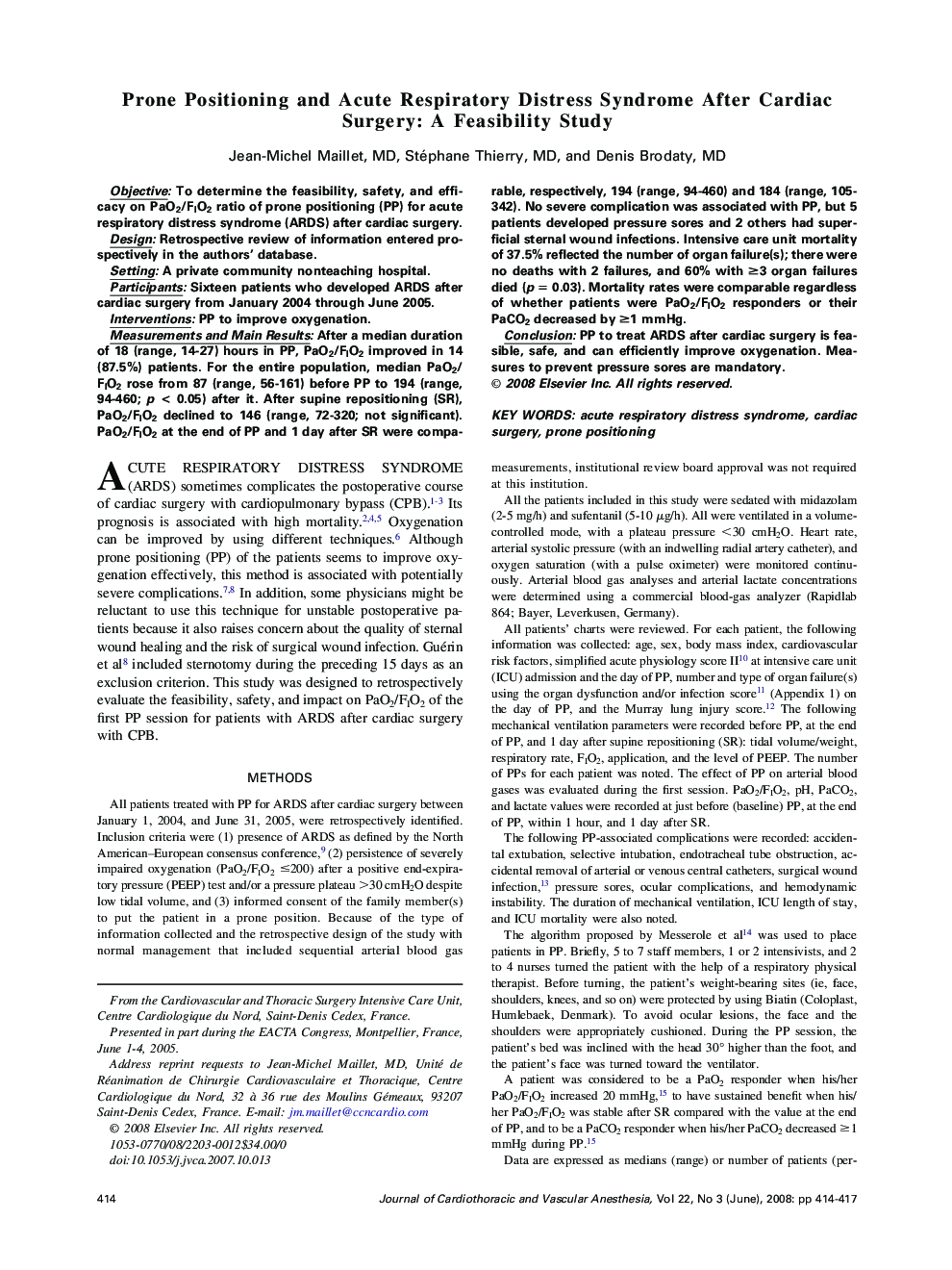| Article ID | Journal | Published Year | Pages | File Type |
|---|---|---|---|---|
| 2761068 | Journal of Cardiothoracic and Vascular Anesthesia | 2008 | 4 Pages |
Objective: To determine the feasibility, safety, and efficacy on PaO2/FIO2 ratio of prone positioning (PP) for acute respiratory distress syndrome (ARDS) after cardiac surgery.Design: Retrospective review of information entered prospectively in the authors' database.Setting: A private community nonteaching hospital.Participants: Sixteen patients who developed ARDS after cardiac surgery from January 2004 through June 2005.Interventions: PP to improve oxygenation.Measurements and Main Results: After a median duration of 18 (range, 14-27) hours in PP, PaO2/FIO2 improved in 14 (87.5%) patients. For the entire population, median PaO2/FIO2 rose from 87 (range, 56-161) before PP to 194 (range, 94-460; p < 0.05) after it. After supine repositioning (SR), PaO2/FIO2 declined to 146 (range, 72-320; not significant). PaO2/FIO2 at the end of PP and 1 day after SR were comparable, respectively, 194 (range, 94-460) and 184 (range, 105-342). No severe complication was associated with PP, but 5 patients developed pressure sores and 2 others had superficial sternal wound infections. Intensive care unit mortality of 37.5% reflected the number of organ failure(s); there were no deaths with 2 failures, and 60% with ≥3 organ failures died (p = 0.03). Mortality rates were comparable regardless of whether patients were PaO2/FIO2 responders or their PaCO2 decreased by ≥1 mmHg.Conclusion: PP to treat ARDS after cardiac surgery is feasible, safe, and can efficiently improve oxygenation. Measures to prevent pressure sores are mandatory.
